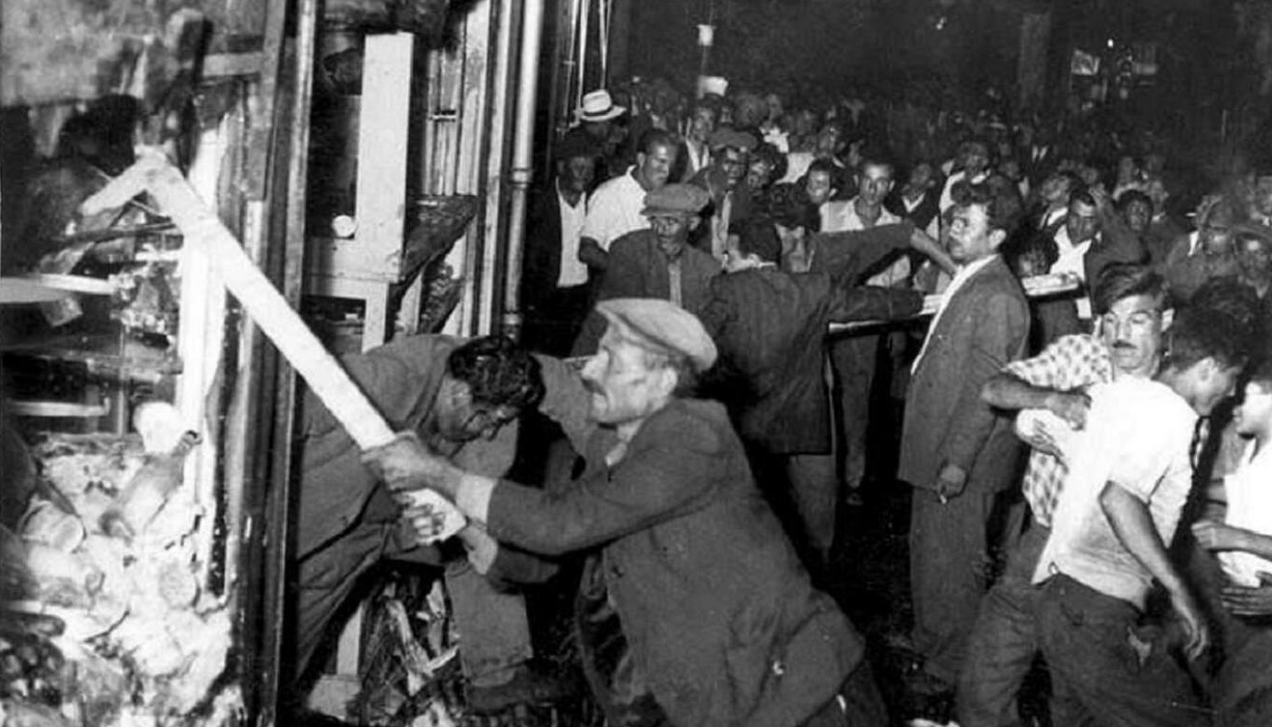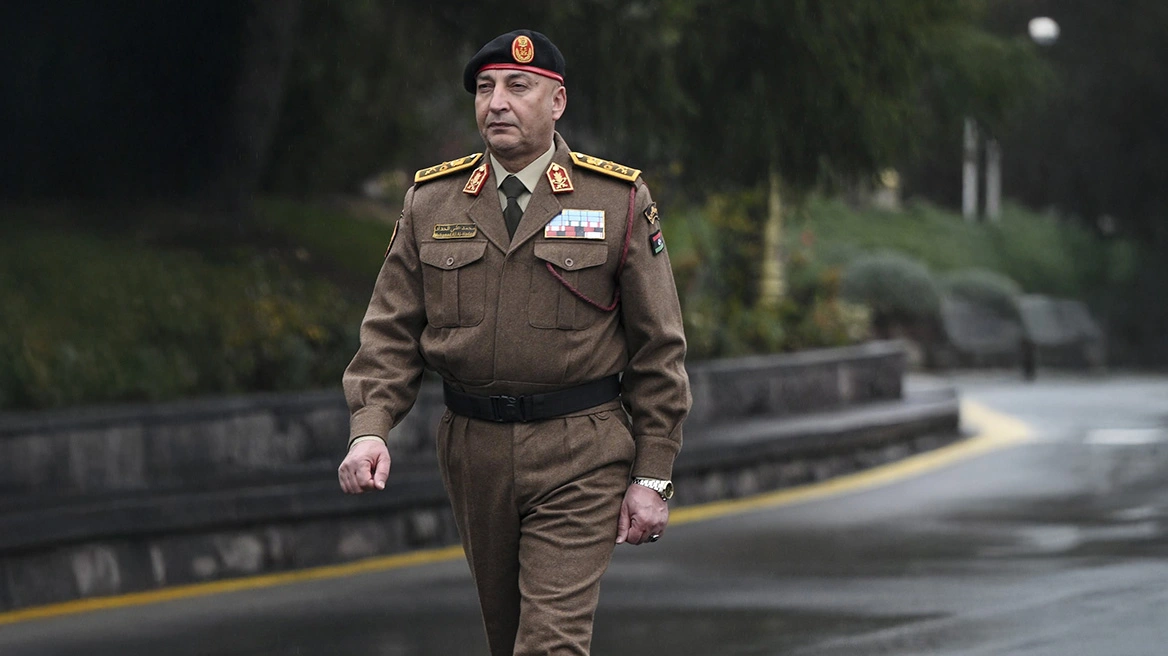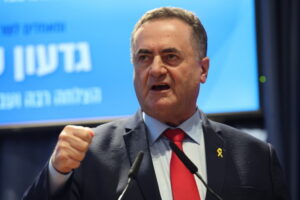Constantinople was the capital of the eastern Christian world since Emperor Constantine in 330 A.D. It was conquered by the Muslim Sultan Mehmet II on May 29, 1453. Tens of thousands of Christians were raped, killed, enslaved or deported during the fall of Constantinople. The largest Christian church in the world for nearly a thousand years, Hagia Sophia, was converted into a mosque. Muslims covered the church’s four acres of beautiful Bible-themed gold mosaics with whitewash and Qur’an verses, and surrounded the church with Islamic minarets. The Turkish government has never offered to give ownership of the church back to Christians.
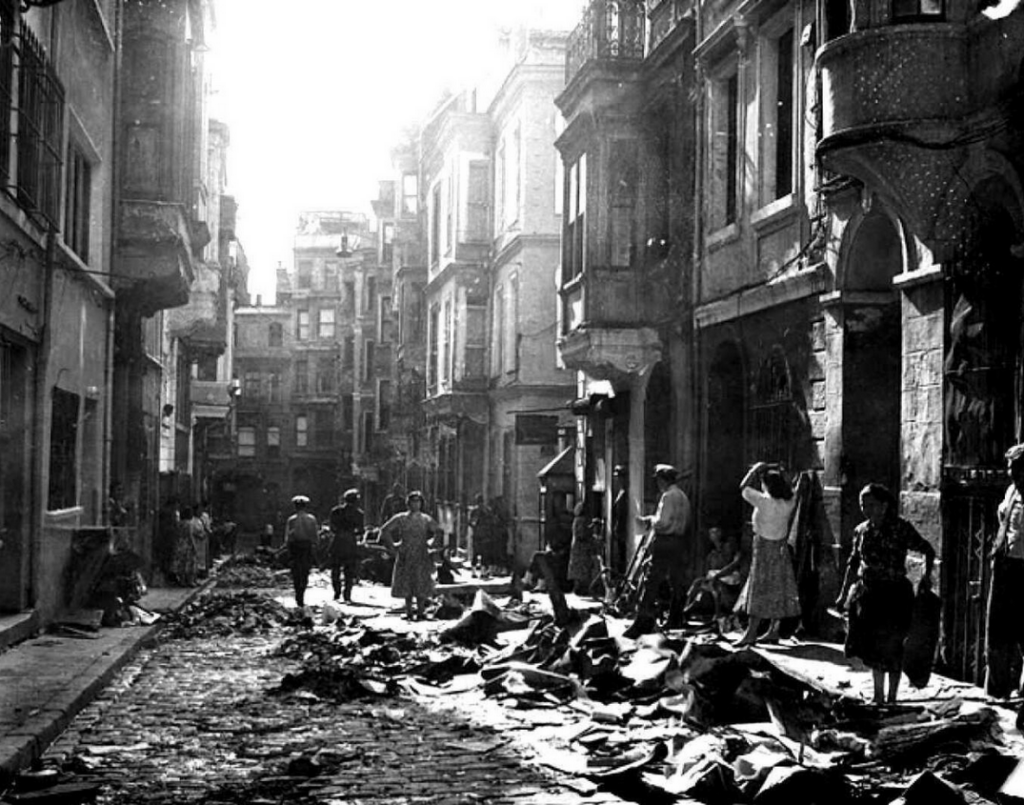
Five centuries later, in 1930, Constantinople was renamed Istanbul, derived from the Greek phrase “is tin Polin” (in Greek: “εις την Πόλην”) meaning “to the City”, being the answer to the question “where are you going?”. In 1950, Adnan Menderes became prime minister of Turkey. Adnan Menderes gave a speech supporting the return of the caliphate. He re-opened thousands of mosques which had been closed down, brought back the Arabic language Islamic call to prayer and encouraged Muslims to follow Islam more fundamentally.
On April 1st the Greek-Cypriot struggle for Independence had started against the British occupation of the island. The British were furious and sought a way to retaliate against the Greeks. They gave the “OK” to Turkey to organize a provocation, as an English diplomat told Stefanos Stefanopoulos, then Minister of Foreign Affairs of Greece, and was made public many years later in a television documentary by an old politician, colleague and friend of Stefanopoulos, Giorgos Zigdis.
Adnan Menderes’ government carried out the provocation whereby a Turkish university student was to place explosive charges in the Turkish Consulate and in the birthplace of Mustafa Kemal Ataturk in Thessaloniki, Greece. The plan was to blow it up on Sept. 3, 1955 and blame it on the Greek Christian minority.
The bomb never went off, but the newspapers ran with the story anyway, inciting Muslims to jihad violence. In just a few hours, Greek Christian neighborhoods in Istanbul were pillaged with thousands of shops, houses, churches and graves destroyed.
Like the “Kristall Nacht,” Nov. 9, 1938, when Nazis in Germany and Austria smashed and vandalized Jewish stores and neighborhoods, the “Istanbul pogrom” of Sept. 6-7, 1955, saw Turkish mobs lay waste to Greek homes, businesses and churches in a mad frenzy that lasted for nine hours.

Greek women and young boys were targeted for public rape. Turkish author Aziz Nesin witnessed Greek Christian men beaten and forcibly circumcised in the streets by marauders. Sixteen Greek Orthodox clerics were killed.
Historian Spero Vryonis Jr., author of “The Mechanism of Catastrophe,” recorded that rioters desecrated cemeteries and overturn tombstones, quoting a British journalist who witnessed one graveyard where: “The contents of every coffin spilled into the streets.”

Armenian and Jewish shops were destroyed as Turkish police stood by passively, giving rioters space.
The destruction included over:
– 4,348 Greek-owned businesses
– 1,000 Greek homes
– 110 hotels
– 27 pharmacies
– 23 schools
– 21 factories
– 3 monasteries
– 73 of the 81 Greek Orthodox Churches in the city
The World Council of Churches estimated the damage at over 150 million dollars.
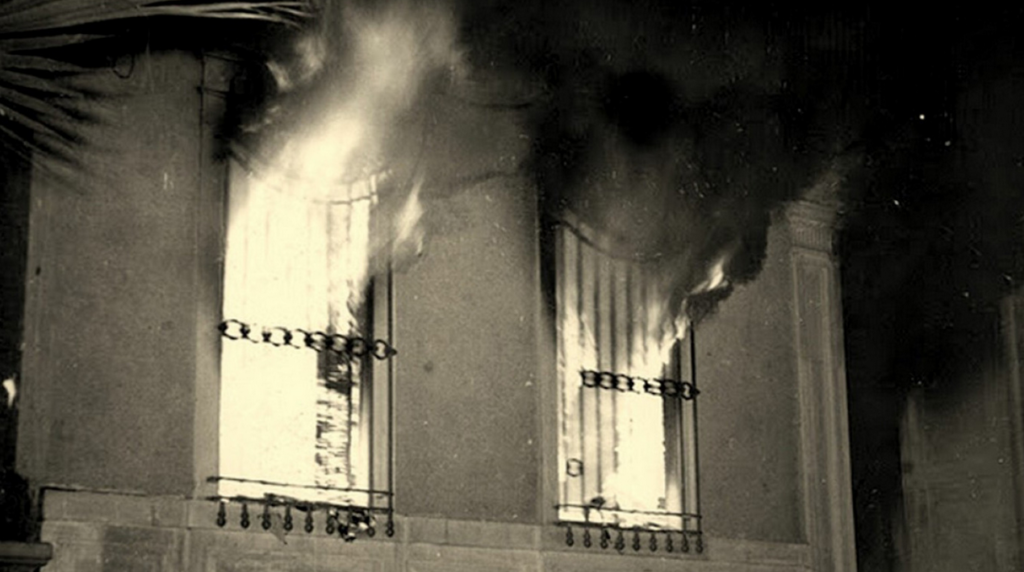
The mob chanted “Massacre the Greek traitors” and “Down with Europe.” In one church arson attack, Father Chrysanthos Mandas, was burned alive. Greek cemeteries were desecrated with relics of saints burned or thrown to dogs.
Journalist of the London Daily Mail, Noel Barber, wrote Sept. 14, 1955: “The church of Yedikule was utterly smashed, and one priest was dragged from bed, the hair torn from his head and the beard literally torn from his chin. … Another old Greek priest in a house belonging to the church and who was too ill to be moved was left in bed, the house was set on fire and he was burned alive. … At the church of Yenikoy, a lovely spot on the edge of the Bosporus, a priest of 75 was taken out into the street, stripped of every stitch of clothing, tied behind a car and dragged through the streets. They tried to tear the hair of another priest, but failing that, they scalped him, as they did many others.”
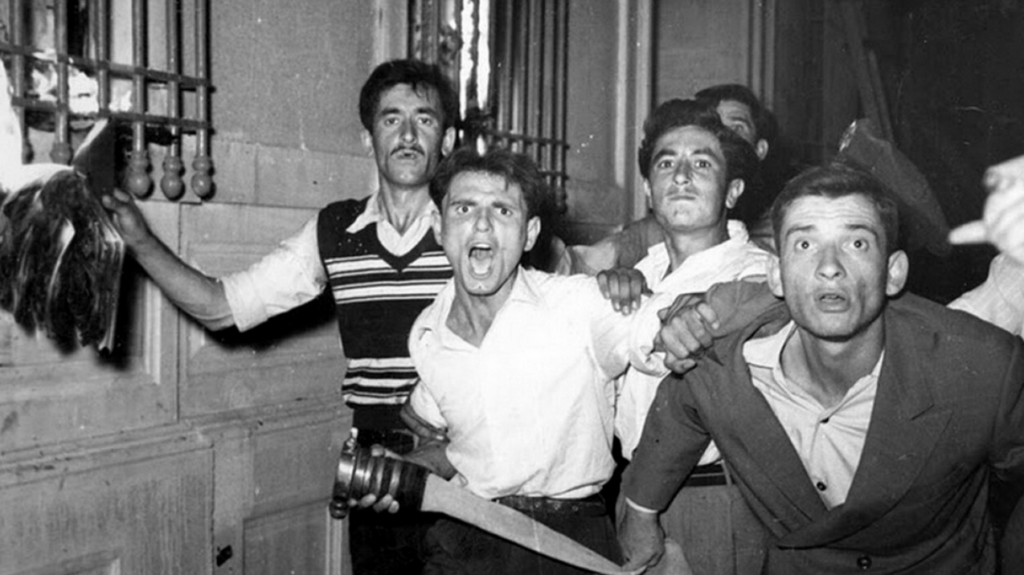
An eyewitness reporter from the London Sunday Times was Ian Fleming, who later became well-known for writing the James Bond detective stories. Ian Fleming was covering the INTERPOL (International Police) Conference in Istanbul.
Ian Fleming’s column “The Great Riot of Istanbul,” printed Sept. 11, 1955, described how “hatred ran through the streets like lava.” (Phillip Mansel, “Constantinople: City of the World’s Desire,” 1453-1944, Harmondworth, U.K., Penquin, 1995, p. 425). Ian Fleming referenced the Istanbul riot as as background information in his James Bond spy novel, “From Russia, with Love” (1957).
The riots were reported in the Illustrated London News, Time Magazine and Reader’s Digest, which described Istanbul as “a city gone mad.”
During the 1955 Istanbul Pogrom, over 100,000 Greeks fled. The discrimination continued and in 1958, Turkish nationalist students campaigned for a complete boycott on all Greek businesses.
In 1964, the Turkish government deported 50,000 more Greeks.
In August of 1995, Sen. Alfonse D’Amato (NY) introduced U.S. Senate Resolution 160 calling on President Bill Clinton to proclaim Sept. 6 as a day of memory for the victims of the 1955 Istanbul Pogrom. (104th Congress, U.S. House of Representatives, Library of Congress, 1995-07-08):
Whereas, in September 1955, there existed a Greek minority population of 100,000 in Istanbul, Turkey;
Whereas, on the night of September 6-7, 1955, a pogrom against the Greek community began in Istanbul;
Whereas anti-Greek rioters attacked, pillaged, gutted and destroyed more than 2,000 Greek homes, 4,200 Greek shops and stores, 73 Greek Orthodox churches, 52 Greek schools, eight Greek cemeteries, all three major Greek newspaper plants, and dozens of Greek factories, hotels, restaurants, and warehouses in Istanbul;
Whereas 15 Greeks were killed in the pogrom or died subsequently, and 32 were seriously injured;
Whereas as many as 200 women were raped by rioters;
Whereas the United States Consul General in Istanbul reported that police stood idly by or cheered on the rioting mobs;
Whereas the state department received confirmation of ‘elaborate advanced planning for widespread destruction of the property of the indigenous Greek community,’ involving careful preparations by many individuals;
Whereas American journalist Frederick Sondern Jr., writing at the time for Readers Digest, described the events of that night as … one of the wildest eruptions of mob fury and hysteria in modern times. …’;
Whereas homes of Greek officers stationed at NATO headquarters in the Turkish city of Izmir were also attacked and destroyed;
Whereas rioters attacked and burned down the Greek Consulate in Izmir and the Greek Pavilion at the Izmir International festival;
Whereas Turkish authorities failed at the time to convict a single rioter, out of thousands, for any crime committed during the pogrom;
Whereas five years later, after a military coup in Turkey, the former prime minister and acting foreign minister at the time of the pogrom were charged with, and convicted of, numerous criminal actions, including the instigation of the anti-Greek riots;
Whereas the pogrom marked the beginning of the end of the Greek community’s presence in Istanbul, numbering about 2,000 in 1995; and
Whereas September 6, 1995 will mark the 40th anniversary of the pogrom:
Now, therefore, be it resolved, that it is the sense of the Senate that the president should –
(1) take all appropriate steps to observe and commemorate the loss of life and property, and the numerous injuries and offenses, which took place during the pogrom by proclaiming September 6, 1995 as a day of remembrance for the victims of these attacks; and
(2) urge all Americans to honor the victims of the pogrom in the appropriate manner.
As of 2006, only 5,000 mostly elderly Greek Christians remained in Istanbul, the former city of Constantinople – ancient capital of the Christian world.
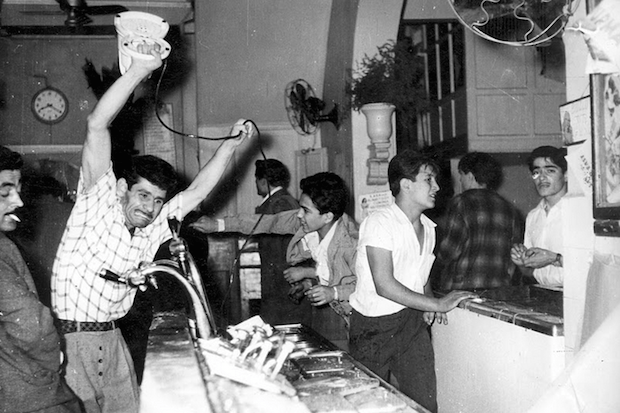
Source: wnd, pappaspost
Ask me anything
Explore related questions
